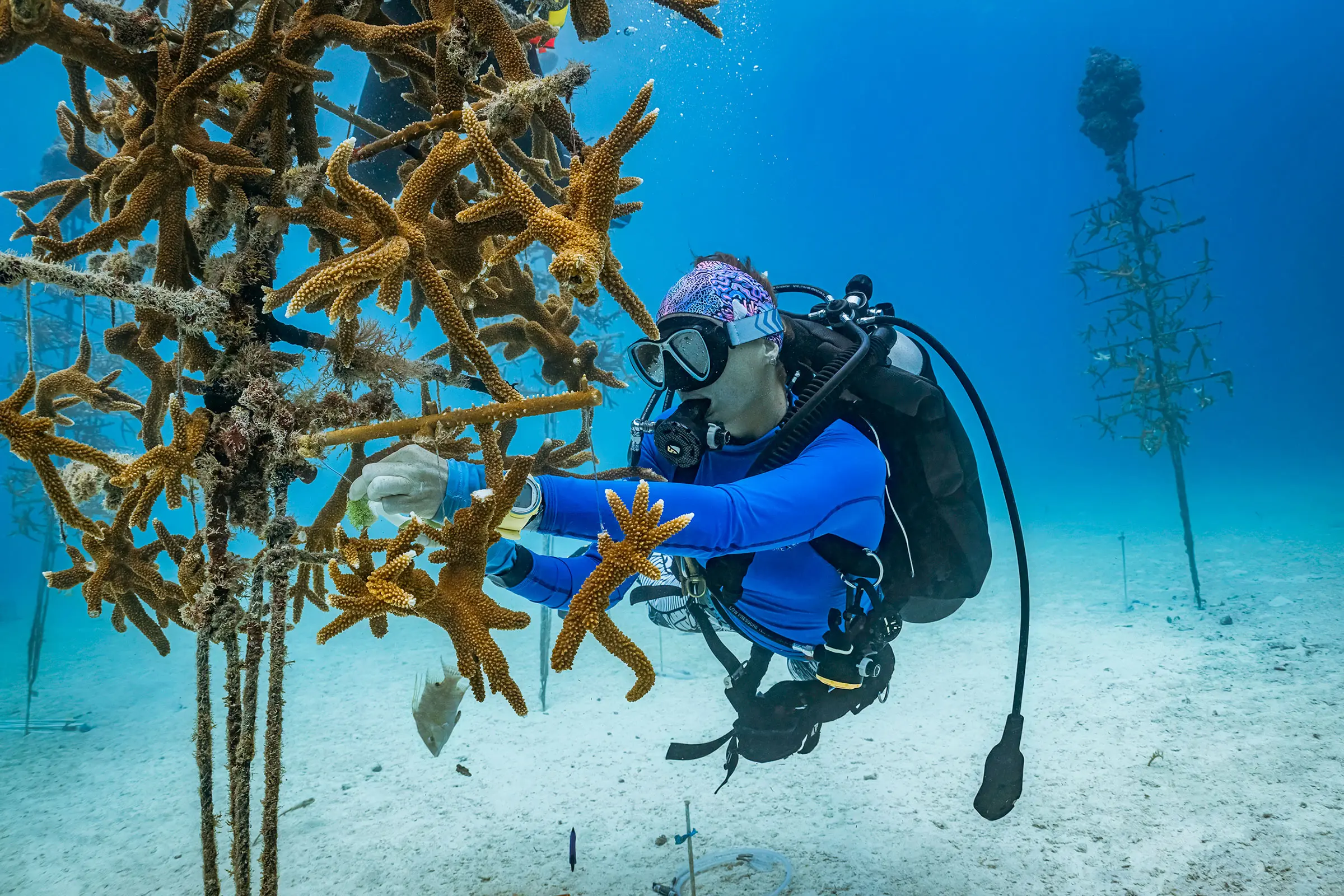How We Can Restore Coral Reefs
he ocean may be nature’s single greatest gift to humanity. It provides about half of the oxygen we breathe, feeds billions of people, supports countless jobs in every corner of the globe, and absorbs more carbon dioxide than anything else on earth. The ocean connects us all.
But right now, the ocean is sounding an unmistakable alarm. Fishing boats around the world are returning emptier. Coastal zones are growing warmer and murkier, and they are becoming more polluted as millions of gallons of water laced with pharmaceuticals, forever chemicals, and sewage leak into the sea. Coral reefs are turning white.
We come to these challenges with different experiences and perspectives. One of us lives in the Florida Keys and chairs the White House Environmental Advisory Task Force. The other lives in Hawaii and the Bay Area and leads a global technology company. At the same time, we share something fundamental: a deep commitment to the health of the oceans—and a deep belief that differences in some areas should not prevent us from working together on pressing issues where we agree. We need to roll up our sleeves and get to work.
We have an opportunity for global action. From June 9 to June 13, officials from more than 100 nations, scientists, and innovators will gather in Nice, France, for the United Nations Ocean Conference, held only once every few years. The meeting will test our ability to work together across sectors, borders, and worldviews, and to act on behalf of future generations.
That’s why we’re calling for a focused global effort to restore coral-reef health. Coral-reef ecosystems—from the famous reefs of the Florida Keys National Marine Sanctuary to the Great Barrier—are the ocean’s rainforests. Vital and vulnerable, they shelter nearly a quarter of marine life, buffer coastal communities from storms, and sustain billions of dollars in fisheries and tourism. Yet they are disappearing at unprecedented speed.
Rising temperatures are part of the problem. But so are decades of negligence, coastal pollution, overfishing, and damage from dredging and poorly planned ports and coastal infrastructure.
We believe that addressing coral-reef health is a smart place to focus—not because it is the only crisis, but because it offers a clear, actionable, achievable goal that can unite governments and ocean advocates across sectors. We also know that nature-based solutions are powerful, proven, and cost-effective tools for addressing the impacts of climate change and biodiversity loss. Restoring coral reefs—like planting and conserving trees—empowers nature to do what it does best: regenerate, protect, and sustain life.
We’ve seen a model for this kind of collaboration before.
As part of the Trillion Trees (1t.org) movement, the first Trump Administration joined an unprecedented global effort to reforest the planet. Trees are the planet’s natural air purifiers—the single most effective “device” we have to pull carbon out of the atmosphere. There remains far more work to do. Yet with more than 9.7 billion trees pledged and more than 54 million hectares of land under sustainable management so far, the Trillion Trees initiative demonstrates the progress that’s possible when we align behind a common goal.





Leave a Reply
Want to join the discussion?Feel free to contribute!